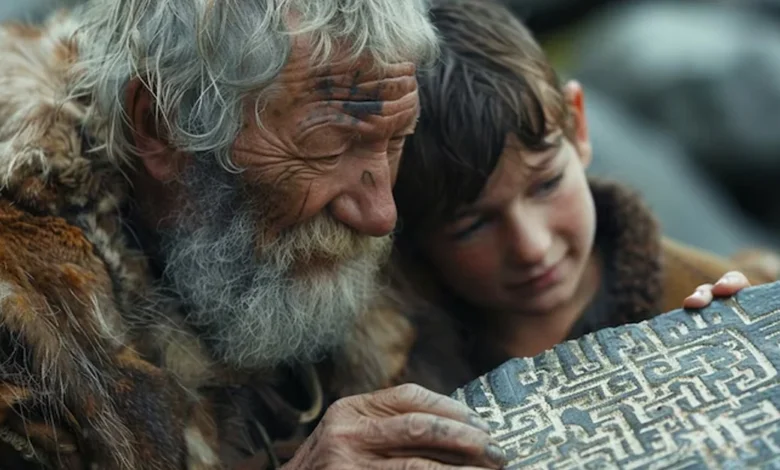Gugequshi: Reinventing Storytelling for the Global Digital Generation

In today’s hyper-connected world, gugequshi stands out as a vibrant and evolving storytelling tradition. Rooted deeply in history, this unique narrative form blends the charm of cultural legacy with the power of digital innovation. No longer limited by geographical or linguistic boundaries, gugequshi is transforming how stories are shared, perceived, and preserved. Whether you’re a modern digital creator or a passionate consumer of stories, the reawakening of gugequshi in the digital realm is something to celebrate and explore.
From Oral Origins to Global Streams: The Journey of Gugequshi
Gugequshi has ancient origins, tracing back to oral storytelling practices passed from one generation to another. In its earliest form, it served as a vital tool for cultural transmission, often shared during family gatherings, village rituals, or communal celebrations.
As civilizations progressed, gugequshi evolved from spoken word to written manuscripts. These stories, once carried by voice, found permanence in ink, broadening their reach and impact. This pivotal shift preserved countless narratives that might have otherwise been lost to time.
The printing press further amplified gugequshi, making collections of folklore and community legends accessible to larger audiences. Reading stories became a cherished activity, fueling imaginations across generations.
Today, with the advent of digital media, gugequshi is experiencing a renaissance. From blogs to animated series, podcasts to viral videos, the art form is more dynamic than ever, echoing the pulse of our digital lives while staying anchored in tradition.
Digital Tools, Timeless Tales: Technology’s Influence on Gugequshi
Technology has played a monumental role in reshaping gugequshi for modern times. No longer constrained to the spoken or printed word, stories are now enhanced by multimedia experiences—audio narration, visual storytelling, animations, and interactive platforms.
Platforms like YouTube, Spotify, Instagram Reels, and TikTok enable storytellers to reimagine gugequshi with sound effects, music, motion graphics, and voice acting. This immersive approach especially appeals to younger, digitally native audiences who value engagement and sensory stimulation.
Moreover, digital spaces allow creators to bypass traditional publishing routes. Anyone with a story and internet access can participate, share, and be heard. This democratization has broadened the spectrum of voices contributing to gugequshi, allowing for diverse cultural expressions.
Still, with so much content circulating, standing out poses a real challenge. Noise and saturation can overshadow authenticity, making it crucial for storytellers to maintain the soul of gugequshi amid innovation.
Gugequshi: Reinventing Storytelling for the Global Digital Generation
What was once a regional art form has blossomed into a global phenomenon. Thanks to digital networks and global platforms, gugequshi has captured the hearts of international audiences. It speaks to universal human emotions—love, loss, hope, transformation—making it relatable across cultures.
Social media is a powerful amplifier for gugequshi. Stories travel thousands of miles in seconds, inviting engagement from people in vastly different contexts. The themes in gugequshi, often centered around moral lessons or cultural truths, find common ground with audiences everywhere.
International collaborations have added new layers to gugequshi, blending traditional elements with contemporary artistic styles. These partnerships not only elevate storytelling but also foster intercultural dialogue.
Digital storytelling festivals, virtual exhibitions, and global forums now feature gugequshi as a celebrated genre. Its growing popularity has encouraged more creators to explore, adapt, and innovate within this age-old format.
Gugequshi: Reinventing Storytelling for the Global Digital Generation
In the digital era, storytelling through gugequshi comes with both exciting opportunities and notable challenges.
Benefits:
- Global Accessibility: Anyone with a mobile device can access stories from anywhere in the world, breaking barriers of location and language.
- Diverse Representation: Creators from all backgrounds can share their own versions of gugequshi, bringing forth previously marginalized perspectives.
- Interactive Experience: Viewers and listeners often become active participants, offering feedback, remixing content, or influencing future narratives.
- Creative Expansion: Multimedia storytelling unlocks new creative dimensions—voice, motion, interactivity—that were previously inaccessible.
Challenges:
- Content Saturation: With thousands of stories uploaded daily, unique voices risk being drowned out in the digital noise.
- Short Attention Spans: Many digital consumers prefer bite-sized content, making it difficult for complex gugequshi tales to retain attention.
- Loss of Authenticity: As creators aim to trend or monetize, some adapt stories in ways that dilute their original cultural or moral depth.
- Platform Dependency: Reliance on digital platforms makes creators vulnerable to algorithm changes or content removal, affecting long-term visibility.
Reinventing Tradition: Creative Gugequshi in the Digital Space
Gugequshi has proven its adaptability across formats, thriving in new digital ecosystems. Let’s look at some successful, modern-day applications of this timeless tradition:
- Animated Folklore Series: Traditional tales have been transformed into beautifully animated shorts, often shared on YouTube or streaming platforms. These bring visuals and sound to once oral-only stories.
- Podcast Storytelling: Audio storytelling has taken off, reviving the essence of listening to tales by the fire—but now with binaural sound, music, and effects. These podcasts often invite listener engagement and feedback, evolving gugequshi into a dialogue.
- Social Media Shorts: Platforms like TikTok and Instagram are home to mini gugequshi episodes—concise, emotional, and shareable. Many creators cleverly distill deep themes into one-minute videos that go viral.
- Interactive Theater and Live Streams: Online stage performances of gugequshi tales allow actors to engage viewers in real-time. These experiences mirror traditional gatherings but leverage technology for global participation.
Each of these adaptations proves that gugequshi is not only surviving but thriving in the digital age.
Looking Ahead: The Roadmap for Gugequshi’s Digital Future
The future of gugequshi holds immense promise. As technological advancements continue, so too will the ways in which stories are conceived, shared, and preserved.
Augmented reality (AR) and virtual reality (VR) could introduce audiences to immersive gugequshi worlds. Artificial intelligence (AI) may assist in curating personalized storytelling experiences based on user interests and cultural preferences.
However, creators will face the growing challenge of maintaining the spirit of gugequshi while navigating commercial interests and shifting audience behaviors. Storytellers must be deliberate in balancing innovation with integrity.
Education will also play a role. Incorporating gugequshi into school curricula or language apps can help younger generations appreciate cultural heritage in modern formats.
Community-driven platforms may emerge to protect, archive, and celebrate traditional gugequshi, ensuring that its cultural significance is preserved even as its forms evolve.
Ultimately, gugequshi will not disappear—it will transform. And in doing so, it will continue to connect humanity across boundaries, just as it always has.
FAQs:
What is Gugequshi?
Gugequshi is a vibrant and evolving storytelling tradition that blends oral heritage with digital innovation. It originated in intimate, oral storytelling settings and has since adapted into written, visual, and digital formats, captivating audiences globally.
How has Gugequshi changed over time?
Gugequshi started as an oral tradition but evolved into written literature, printed books, and now exists across digital media platforms like podcasts, social media, and streaming services.
What impact does technology have on Gugequshi?
Technology expands the reach and expression of gugequshi. It enables multimedia storytelling and global sharing but also introduces challenges such as content overload and potential loss of cultural authenticity.
What are popular digital formats of Gugequshi?
Popular formats include animated folk stories, narrative podcasts, viral social media videos, and live digital theater. These help modern audiences connect with traditional tales in contemporary ways.
What lies ahead for Gugequshi?
The future of gugequshi will likely involve immersive technologies and community-based platforms. Storytellers will need to maintain cultural integrity while embracing tools that expand global access and interaction.
Keep an eye for more news & updates on Evolant Agency!




